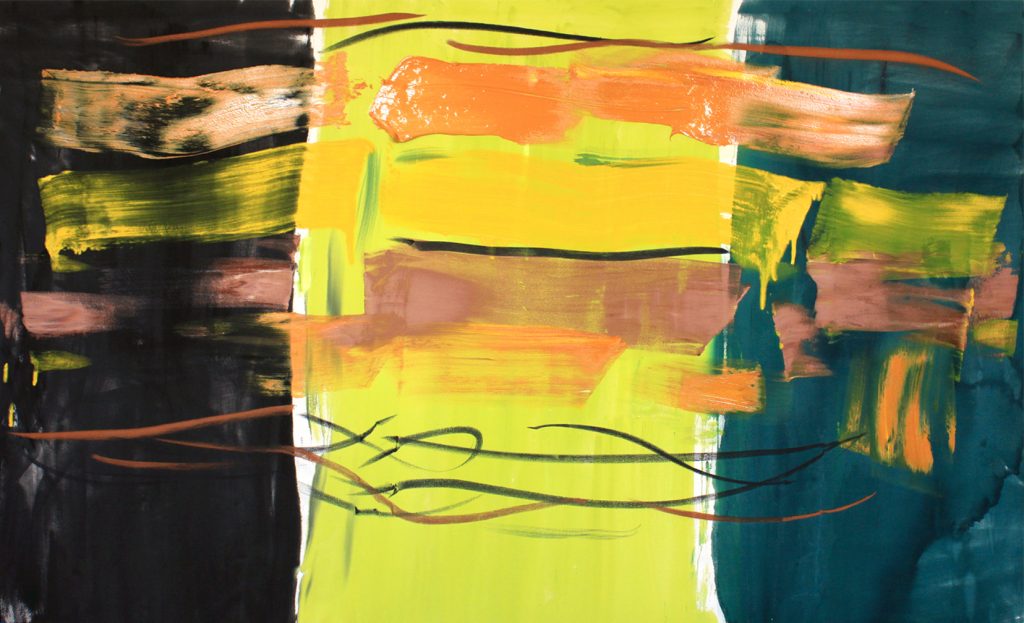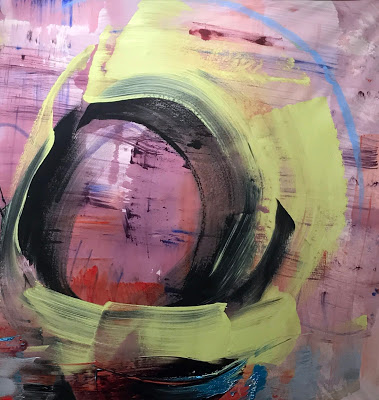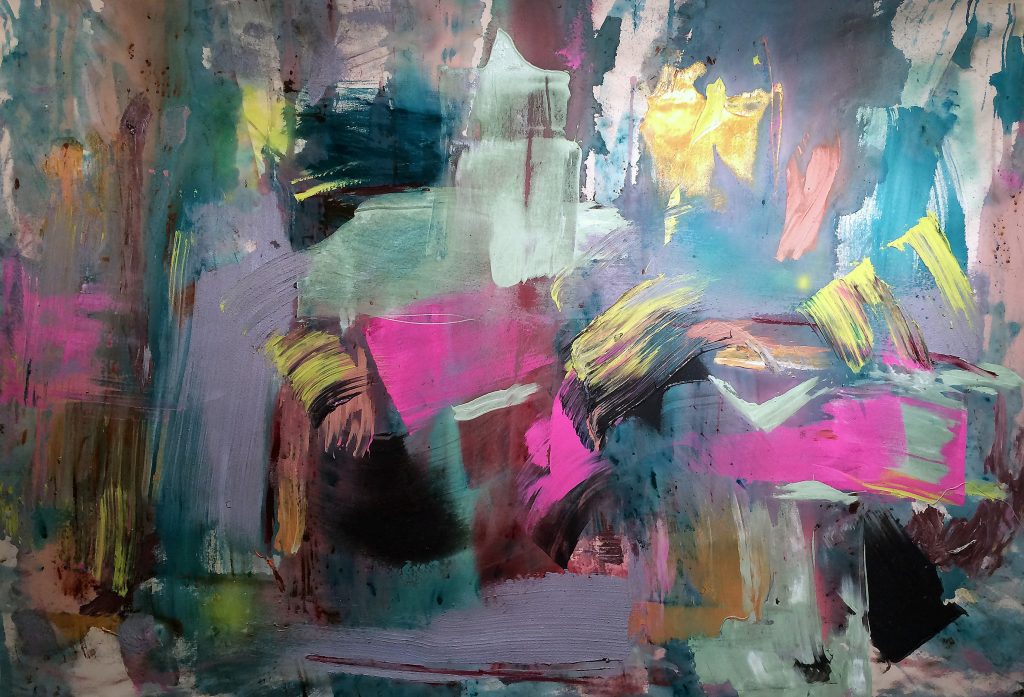Cavalier Galleries in New York City
by Dominque Nahas

Francine Tint’s solo exhibition at Cavalier Galleries aptly titled Explorations consisted of twelve acrylic-on-canvas gestural abstractions ranging in size from an intimately scaled 25”x 25” to a whopping, in-your-face 52” x 210” work. Most of the art in Explorations, with one exception, was done between 2017 and 2018 and this exhibition showcases Tint’s capabilities of poetic invocation to the hilt. This artist is a senior member of the ab-ex boy’s-club movement and over the years has not relinquished her steady hold of gestural abstraction. Instead she has consistently re-invigorated expressionism with new energy and vitality, as this show demonstrates. There are numbers of surprises in the exhibition and they fall under several categories. One of them is how moodily poetic this artist’s work can be and how charged her visual poetry actually is through Tint’s exploratory surfeit use of a variety of material traces and a comprehensive array of different painterly marks wielded by the painter to suit various internal needs of expression. These gestural marks are generated from a spectrum, ranging from those that are relatively random, mechanical, self-effacing, or constructive to those that are provisionally expressive, eccentric, deliberate or flamboyant. What is more, Tint is apt to combine all these marks at once and sometimes her mark or marks purposefully vacillate equivocally between oppositional poles. A good example of this application of visually expressive polyphony and tonal multi-vocality is Tiger (2017). Here Tint’s dynamic spatial play, engendered by the loose geometry of the tri-partite ordering of the pictorial surface, is enhanced by a persuasive ambiguity. Long, dark sinuous horizontal lines seem to be embedded within languid, opulently levitating, interstitial, ribbon-like brush marks that seem to quaver between front, middle and background positions vis-à-vis the three upright-positioned rectangles.

There has always been a sense of urgency in the way Tint handles her colors and hues that were described a few years back by an observer as “acerbic. ” I think this is a good thing. The irascibility, such as it is, in Tint’s art as part of her style gives her work a decisively pungent quality that obviates false conviviality or sanctimony or sweetness. The poetry that is discharged or deployed in her work is both sweet and sour, inducing a jolie-laide ambience filled with complexity and uncertainties, tinged with what W.B. Yeats would call “terrible beauty.” There is a drama that arises out of all of Francine Tint’s paintings, large or small, and that is the drama of suggesting through her legerdemain of paint handling that there is an animated visual event that is in the process of unfolding in front of your eyes, of unveiling itself. A sense of anticipation clings to her works as a palpable sovereign state of perception assumes ownership of your sensibilities as the participating viewer. Rebirth, 2017, is such a painting that is charged with that energy of an apparition. So is Bloom of Darkness, 2018. These artworks and others offer us a vision of an animated force. John Berger encapsulates this feeling and corresponding sensation in a group of essays entitled The Sense of Sight. He writes, in the chapter On Visibility: “Visibility is a form of growth. Aim: to see the appearance of a thing (even an inanimate thing) as a stage in its growth – or as a stage in a growth of which it is part. To see its visibility as a kind of flowering.” Francine Tint has been painting for so many years now that she is a master at her métier, which is to engage, induce, and seduce the viewer while sustaining a healthy sense of mystery about the sense of sight. Apart from (and as part of) her mark-making, coloristic and compositional acumen she also has a way of working her paintings so that they hold securely within themselves an aura of

authenticity, of original facticity born out of ritual intent. Towards that purpose Francine Tint doesn’t merely make paintings, she makes entities and charges them with vitality. One is immediately attracted to her paintings from far away and from close-up observation. You see different things in her work from variable distances as much of her visual process is imbued with a strategy of accumulation. The additive quality of her canvases results in a growth and intensification of feeling through layering and collaging. This working process is enhanced through Tint’s tendencies of working her colors and gestural strokes by layering of fields of colors, varying their lengths and girth and intensities. Such inventories of lines, marks and gestural strokes are a way of accruing physicality and depth. By getting in close to the weave of her canvases we see how the physicalizing is furthered by her adding of elements underneath the top layer surface of paint: the pearls in Blooms of Darkness (2018), the sand incorporated as texture in Sea Garden (2017), thick splays of paint extending over the edges of Wonky (2012). Explorations at Cavalier let’s us experience Francine Tint’s unique expressive abstractions for what they are: constituting the merging of the intuitive with the intentional, while setting the tone for compositions that are texturally rich, startlingly diverse and poetically resonant.
